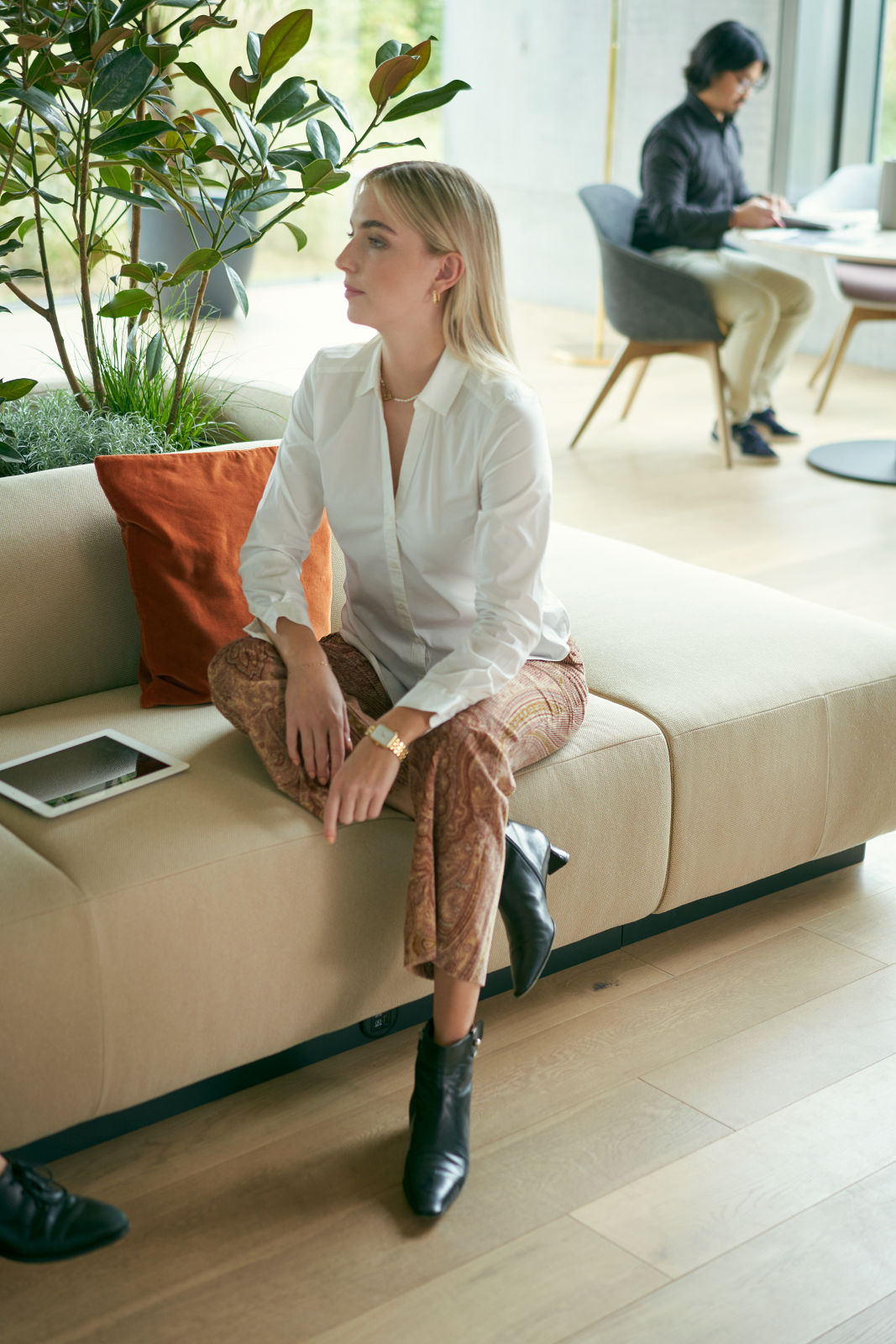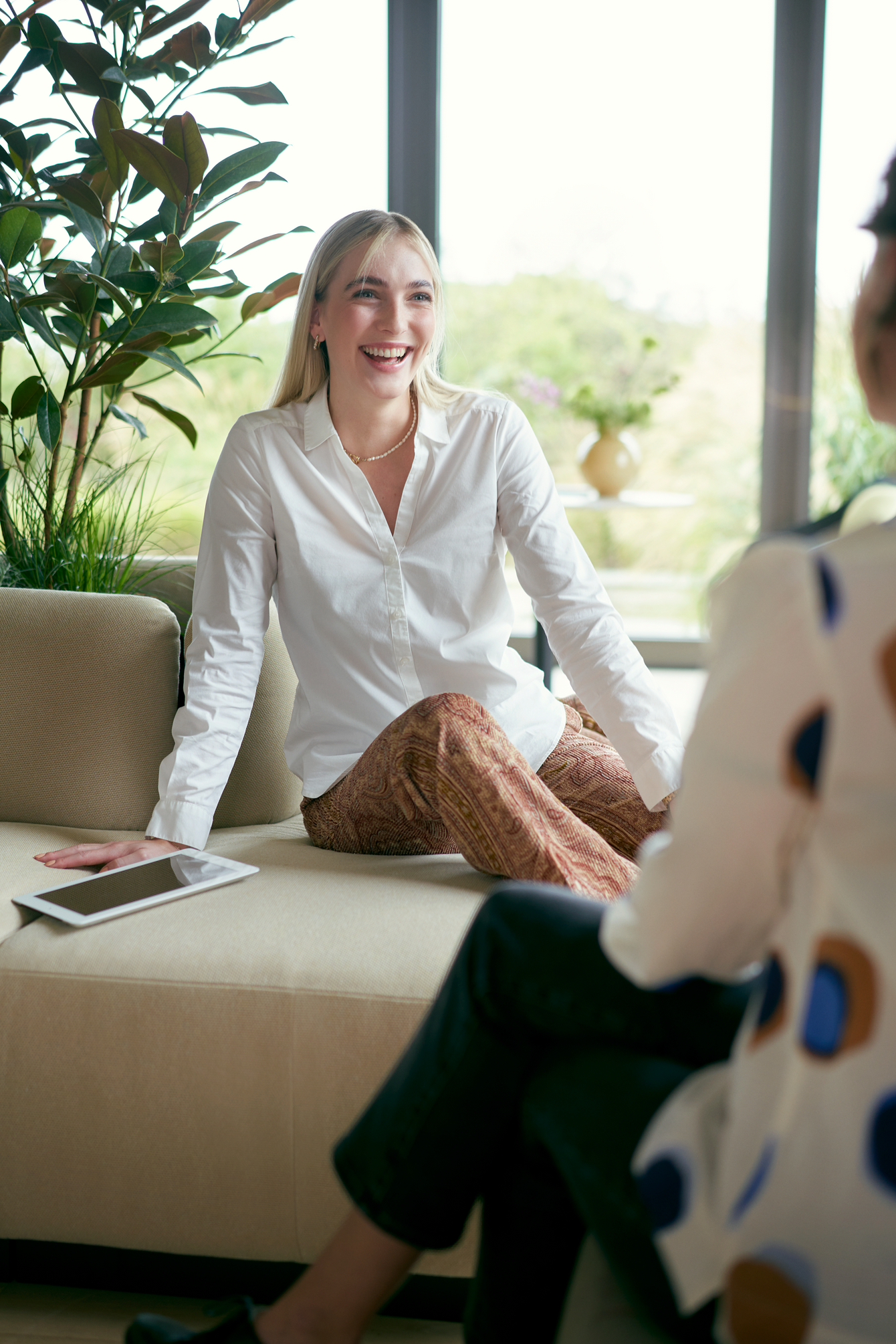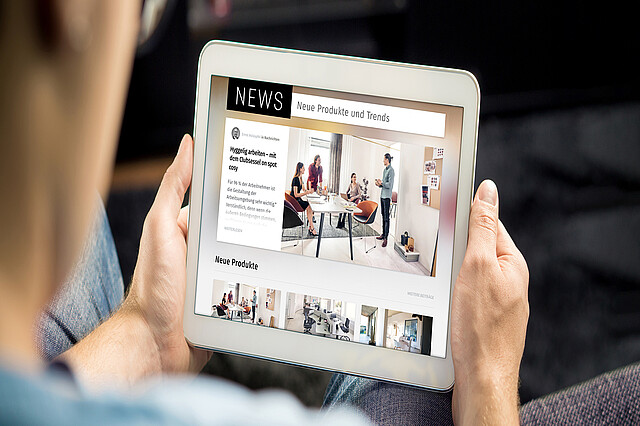The new world of work: flexibility is key
In today’s rapidly evolving work environment, flexibility is becoming a basic requirement of modern working environments. The traditional 9-to-5 office routine is increasingly giving way to more dynamic working models where teams split their time between on-site and remote work, collaborating in varying situations. Scrum and agile methods have accelerated processes requiring companies to adapt swiftly. This need for flexibility extends to the physical design of offices.
The concept of the “human office” is geared towards these new requirements. It offers flexible spaces that adapt to the needs of fluctuating team sizes, hybrid working models and different projects. Modular furniture and interior design elements are essential for quickly and easily reconfiguring workspaces. In this way, the office remains a vibrant, changeable space that promotes innovation and creativity without appearing rigid and impersonal.
The role of the new generations: Changing values and work motivation

A key driver of this shift is the new generation entering the labour market, particularly Generation Z. Compared to previous generations, they place greater value on meaningful work and maintaining a work-life balance. They want more than just a job - they are looking for an environment that promotes health, well-being and personal development.
The “human office” concept reflects these values by focusing on people. It transforms the workplace into a space that not only enhances productivity but also promotes the physical and mental well-being of employees. Ergonomic furniture, thoughtful interior design and the integration of nature (biophilic elements) and natural light create an environment that supports and encourages them in their work.
Focus on people: health, creativity and social interaction
In the future of work, people are recognised as the most important constant. While technological innovations and agile processes come and go, employees remains the heart of the organisation. A “human office” embraces this by prioritising health, creativity and social interaction as essential to the success of a modern working environment. For more than 150 years, Sedus has been committed to employee well-being, under the motto “We really care”.
Ergonomic workstations play a central role in this. They are not only an expression of care for the employee, but also demonstrably contribute to improving health and productivity. A well-designed, ergonomic workplace reduces issues like back pain and muscle tension caused by poor posture, thereby promoting the long-term performance of employees.
In addition, a “human office” provides creative spaces designed specifically for generating innovative ideas. At a time when competitive advantage is increasingly gained through creativity and innovation, these open, flexible areas allow teams to brainstorm and collaborate with new ways of thinking (smart thinking). Teams can meet in open, flexible areas to work on new projects free from the constraints of traditional structures.
Social interaction is also vital. Communal spaces such as lounges, cafés and open kitchens encourage informal interaction, strengthen team spirit and help rebuild the sense of community lost during the pandemic. Cohesion and social bonding among employees are important factors for commitment and motivation - and therefore for the long-term success of the company.
Hybrid working models: office and remote working in harmony

Another key element of the new world of work is the growing importance of hybrid work. The Covid-19 pandemic has demonstrated that many tasks can easily be completed from home without effecting productivity. Companies are now faced with the challenge of balancing in-office presence with remote work and striking the right balance between work-life blend and work-life balance for each employee. For some, merging work and life offers flexibility and advantages, while others prefer clear boundaries between the two.
The “human office” addresses this challenge by redefining the role of the office. While remote working offers flexibility, the office remains a place for connection, social interaction and creative collaboration. It becomes a hub for teamwork while maintaining the flexibility of hybrid working. Flexible spaces and technologies enable seamless collaboration between on-site and remote employees fostering teamwork across locations.
The “human office” as a model for the future?
At a time when the world of work is undergoing profound change, the concept of the “human office” provides a forward-thinking solution. It focuses on people - as the most important constant - and creates a working environment that promotes health, well-being, creativity and social interaction. Companies that embrace this approach are better equipped to meet the challenges of labour shortages, shifting generational values, and the demands of hybrid working models.
The “human office” is more than just a workplace - it is a dynamic, adaptable system that responds to the needs of employees and the demands of the modern working world. It enhances employee satisfaction and productivity, while also serving as a key driver of long-term competitiveness and innovation.
social media channels:


